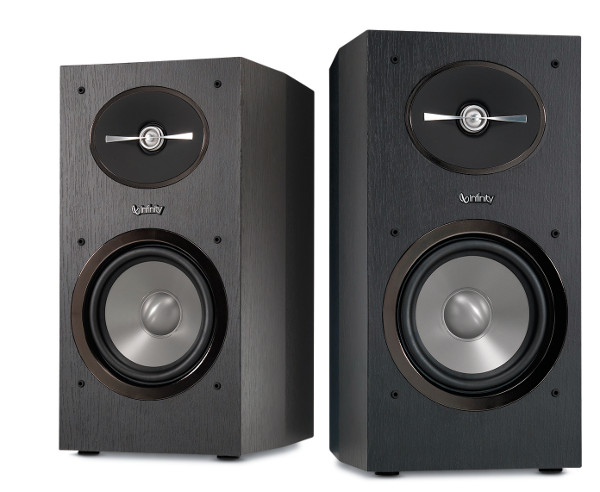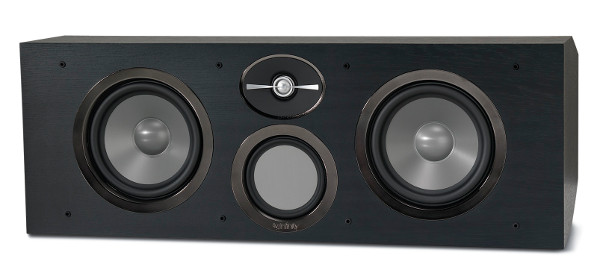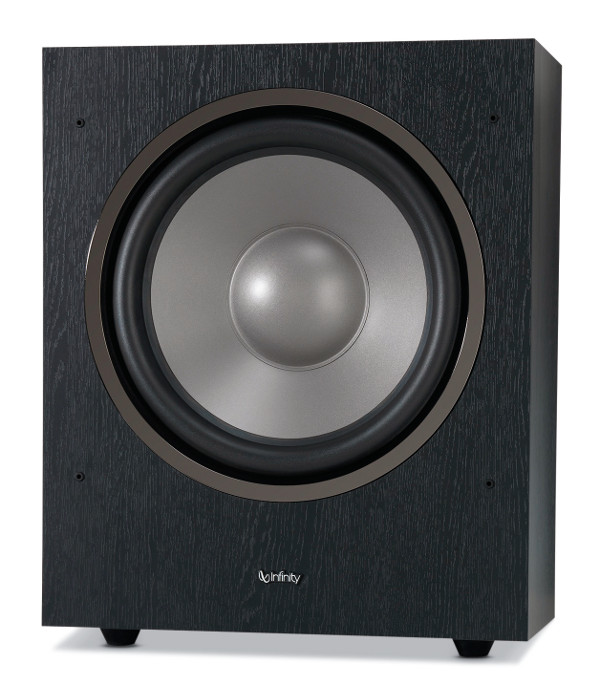Infinity Reference R162 Speaker System

AT A GLANCE
Plus
Detailed high frequencies
Proprietary drivers
Curved enclosure
Minus
Can be too revealing
More finishes needed
THE VERDICT
The new Infinity Reference series has superb top-end transient detail and a commendably subtle sub, turning even familiar material into a fresh experience.
“Attention to detail.” That was my mantra when I hired and trained people to write product descriptions for an e-commerce site. It’s a pretty good rule to live by in general, and I try my imperfect best to practice it myself, both personally and professionally. It came back to me when I pulled the grille off the Infinity R162, part of the big brand’s new Reference series. When I saw a tweeter waveguide unlike any I’d previously seen, I knew I was communing with a kindred spirit, a lover of detail—though one with access to far greater resources than I command as a mere reviewer. Infinity’s parent corporation, Harman International Industries, has the kind of facilities and personnel that many speaker companies can only dream of. Harman pays a whole lot of talented people to attend to detail.
New Reference Series
The R162 ($450/pair) is a 6.5-inch two-way speaker that comes from a large Reference family. That also includes a second “bookshelf” (we call it a monitor) speaker, the R152, a two-way design with 5.25-inch woofer ($350/pair). Then there are a couple of three-way floorstanding speakers, the dual 6.5-inch R263 ($1,000/pair) and dual 5.25-inch R253 ($800/pair), and a couple of centers, the three-way dual 6.5-inch RC263 ($500) and 2.5-way dual 5.25-inch RC252 ($350), as well as a dedicated on-wall surround, the two-way 5.5-inch RS152 ($450/pair). Bringing up the bottom are two subwoofers, the 12-inch, 300-watt SUB R12 ($500) and 10-inch, 200-watt SUB R10 ($400). This review uses two pairs of the R162 in the front and surround positions, plus the RC263 center and SUB R12.
Although I’ve seen homelier speakers, the R162 seems plain at first glance. (A second, lighter finish option might mitigate that.) The 13.5-inch-tall, 0.75-inch-thick, black-veneered fiberboard enclosure curves toward the back, for better internal standing-wave control, and the curve is echoed by the grille. Apart from these convexities, the speaker is just a black box. But when you remove the grille, you notice that the drivers are surrounded by a pair of shiny accent rings, and then things get really interesting.

What Infinity calls “our most advanced waveguide to date” surrounds the tweeter. A plastic ledge nearly 4 inches long bisects the tweeter. Attached to the ledge are a 1-inch plastic ring, which covers the perimeter of the dome and acts as a phase plug (said to improve its integration with the woofer), and a quarter-inch disc at the center of the tweeter. As a whole, the waveguide uses “patented geometry” to provide “cohesive full-spectrum performance and superb off-axis response.”
The RC263 center is more than 25 inches wide. It has same-size, similarly equipped drivers, including two woofers, but adds a 4-inch “flat piston” midrange driver. The midrange is crossed over to the tweeter and woofer at 1,800 and 700 hertz, respectively, versus 2,700 Hz in the monitor (all fourth-order crossovers).
All drivers utilize Infinity’s proprietary CMMD (ceramic metal matrix diaphragm), an aluminum core anodized with a ceramic compound, which “results in an ideal stiffness-to-weight ratio while helping to move resonances up in frequency and out of the pass-band of the drivers.” The center midrange uses a honeycombed paper core. All enclosures (including the sub) are vented.
The SUB R12 has the same 0.75-inch-thick enclosure as the other speakers but adds an extra half-inch subpanel to the baffle. The R12 drives a 12-inch fiber-composite cone with an amp rated at 300 watts RMS or 600 watts peak. It may not look like much, but when I set it up with test signals, I heard deep, pure tones and an absence of overhang that’s unusual at this price.

Associated equipment included a Pioneer Elite VSX-53 A/V receiver, Oppo BDP-83 universal disc player, Micro Seiki BL-21 turntable, Shure V15MxVR/N97XE cartridge, and the phono stage of a Denon PRA-S10 stereo preamp. All movie demos were on Blu-ray Discs with DTS-HD Master Audio soundtracks.
Chameleon with Personality
Some speakers have strong personalities of their own; others are chameleons. With strong top-to-bottom frequency response, this speaker system certainly made warm material sound warm or trebly material sound trebly. But over time, it became apparent that, given material with extended high-frequency information, these monitors focused the top end with particular delicacy, finesse, and yes, attention to detail. No, there was no phony edge enhancement; these speakers were candid rather than ruthless. They also benefited from sharp transients across the frequency spectrum. All of this contributed to superb imaging.
The center speaker’s vocal intelligibility was at the top of the scale, and vocal timbre was so natural (on or off axis) that at times it was hard to believe that the voices were coming out of a speaker. The sub was practically an undercover operative in its handling of voices; they never localized in the sub itself. Its handling of effects, depending on the requirements of the content, was subtle yet solid.
Oculus is a haunted-house movie with an elaborate mirror serving as a portal to evil. Vocal reproduction seemed so perfect as to be almost provocative. Feeling suspicious, I listened for sibilance but detected none (though later, it showed in other material when embedded into the recording). Threatening, low-frequency tones in quieter moments of the soundtrack were suitably understated and, given my room’s standing-wave bass issues, reasonably disciplined. The Infinity system as a whole, according to my notebook, was “crisp, taut, and forceful”—especially in repeated use of an orchestral rave-up that resembled the famous ones in the Beatles’ “A Day in the Life.”

- Log in or register to post comments





































































